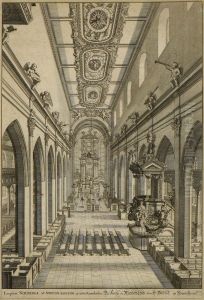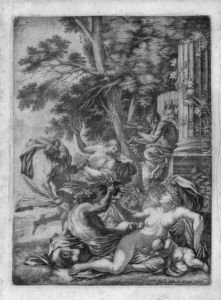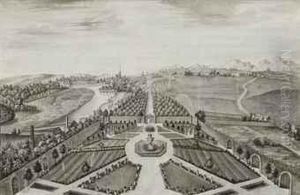Johann Ulrich Kraus Paintings
Johann Ulrich Kraus was a notable figure in the world of art and engraving in the late 17th and early 18th centuries. Born in 1655 in Augsburg, a city renowned for its vibrant artistic community within the Holy Roman Empire, Kraus grew to be a pivotal part of this milieu, contributing significantly to the art of engraving and publishing during his lifetime. His work and influence spanned across various facets of visual arts, including illustration, engraving, and publishing, making him a versatile and influential figure in the European art scene.
Kraus's early life was marked by his immersion in the rich cultural and artistic environment of Augsburg. He trained under prominent artists and engravers of the time, which honed his skills and deepened his understanding of art and design. This apprenticeship was crucial in shaping his artistic direction and career. By the time he established himself professionally, Kraus had become adept in creating intricate engravings that captured the imagination of his contemporaries.
Throughout his career, Johann Ulrich Kraus was known for his exceptional skill in engraving, which allowed him to produce works that were not only artistically profound but also commercially viable. He was particularly recognized for his ability to translate paintings and drawings into engravings that retained the original's essence and beauty. This skill made him a sought-after collaborator by artists and publishers alike, leading to numerous successful partnerships and projects.
One of the defining aspects of Kraus's work was his contribution to the world of book publishing. He was instrumental in illustrating and engraving plates for books, thereby significantly enhancing their value and appeal. His illustrations often encompassed a wide range of subjects, from biblical and mythological scenes to contemporary events and natural history, showcasing his versatility as an artist. These works not only highlighted his mastery of the engraving medium but also his ability to engage with and depict complex narratives and themes.
Johann Ulrich Kraus's legacy is preserved in the collections of museums and libraries around the world, where his engravings continue to be admired for their beauty and technical excellence. His contributions to the fields of engraving and publishing have left an indelible mark on the art world, establishing him as a key figure in the transition from the Baroque to the Enlightenment era in European art. Kraus passed away in 1719, leaving behind a body of work that continues to be studied and appreciated for its artistic and historical significance.


